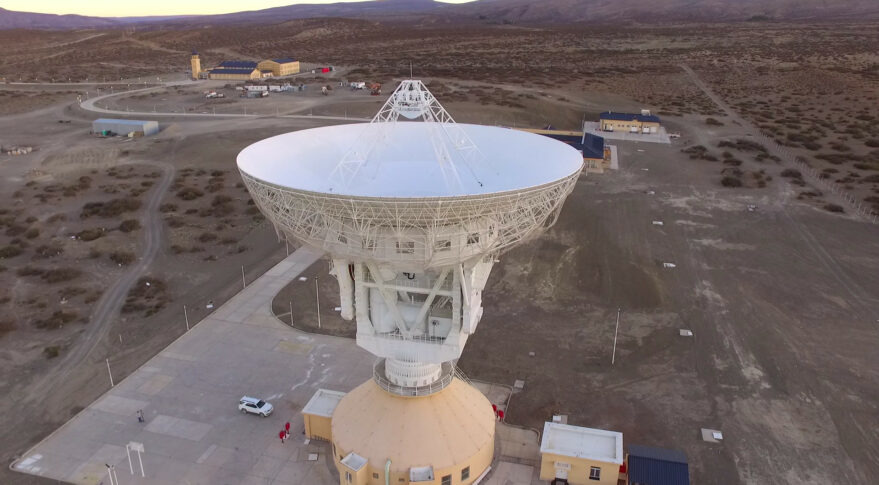
Report highlights U.S. concerns over China’s space infrastructure in South America (Image Credit: Space News)

HELSINKI — The expansion of Chinese ground stations in South America is generating concern regarding Beijing’s intentions in the region and in space, according to a new report.
“China’s space network in South America is part of a broader push by Beijing to establish itself as a leading global space power and partner of choice in space for middle-income economies,” claims the report released Oct. 4 by the Center for Strategic and International Studies.
The network, while having clear civilian uses, could be used to spy on, monitor and potentially even target U.S. and other nations’ spacecraft, it says.
The report details China’s ground station presence in countries including Argentina, Brazil, Venezuela as well as through services provided by the Swedish Space Corporation (SSC) in Chile. It also uses satellite imagery to highlight the facilities themselves.
Ground stations are vital for any space actor. This key infrastructure is required to operate spacecraft, facilitating the exchange of commands and data. Their importance means they are likely to be another area of contest for opposing space powers.
Some of China’s assets, such as Neuquen in Argentina, are part of the China Deep Space Network and support lunar and interplanetary missions such as Chang’e-5 and Tianwen-1.
China has a network of ground stations in China and a presence in places including Namibia, but infrastructure in South America is important to facilitate links with spacecraft when they are orbiting over that part of the world.
Yet the opacity of the agreements with host countries and China’s space industry raises concerns of the potential for military applications of what is inherently dual-use technology, the CSIS report states.
The risks “stem from the far-reaching influence of the People’s Liberation Army (PLA) within China’s space ecosystem,” the CSIS report states, adding that the “PLA Strategic Support Force (PLASSF)—which is responsible for space, cyber, and electronic warfare—has a hand in virtually all Chinese space activities.”
Officials within the U.S. military have expressed concerns in Congressional testimony that the stations “can be used to spy on U.S. assets and intercept sensitive information,” given their proximity to the United States.
Beijing is not exceptional in carving out a role for the military in space, the report states, but adds that the caveat that China’s main civilian space agency, the China National Space Administration, is “overshadowed by the military.”
A more nuanced assessment of PLA involvement in areas of China’s space decision-making can be found in another recent report published by the China Aerospace Studies Institute (CASI).
The report provides a detailed look at organizations known as Leading Small Groups (LSGs) understood through which the Communist Party of China, rather than the PLA, seeks to control its space programs.
While a PLA representative is present in both the lunar exploration and human spaceflight LSGs, these are one among a number of representatives from government and space-related state-owned enterprises and organizations.
The CSIS report however notes that the opacity of China’s activities, intentions and organization raises concerns.
Many of China’s ground station assets, including a fleet of “Yuanwang” tracking ships, are controlled by the China Satellite Launch and Tracking Control General (CLTC), a sub-entity of the PLASSF.
Espacio Lejano, a ground station in Neuquen, Argentina, is owned by CLTC and has attracted attention in the past. A contract between the two governments also stipulates that Argentina “not interfere or interrupt” normal activities carried out at the station during the 50-year agreement.
CSIS cite 2019 testimony from Admiral Craig Faller, then commander of the U.S. Southern Command, that the station at Neuquen, which includes 35-meter and 13.5-meter-diameter antennae, could have the ability “to monitor and potentially target U.S., allied, and partner space activities.”
Issues related to China’s ground stations have cropped up elsewhere, with the SSC in 2020 opting to not renew contracts to provide services to China through a station in Australia.
In July a diplomatic incident was sparked when India protested the expected arrival of China’s Yuanwang 5 space tracking ship at a port in Sri Lanka.
China uses its Yuanwang ships to support launches, providing a key link to launch vehicles and spacecraft during their journey to orbit. The ships are necessary in part because of a lack of vital ground infrastructure in other countries.
Ground stations, given their geographically distributed nature, are often subject to geopolitical tensions and concerns, and will be a point of contention going forward, particularly in the context of U.S.-China relations.
China is understood to be developing inter-satellite laser link capabilities to help offset its lack of distributed ground segment infrastructure.








